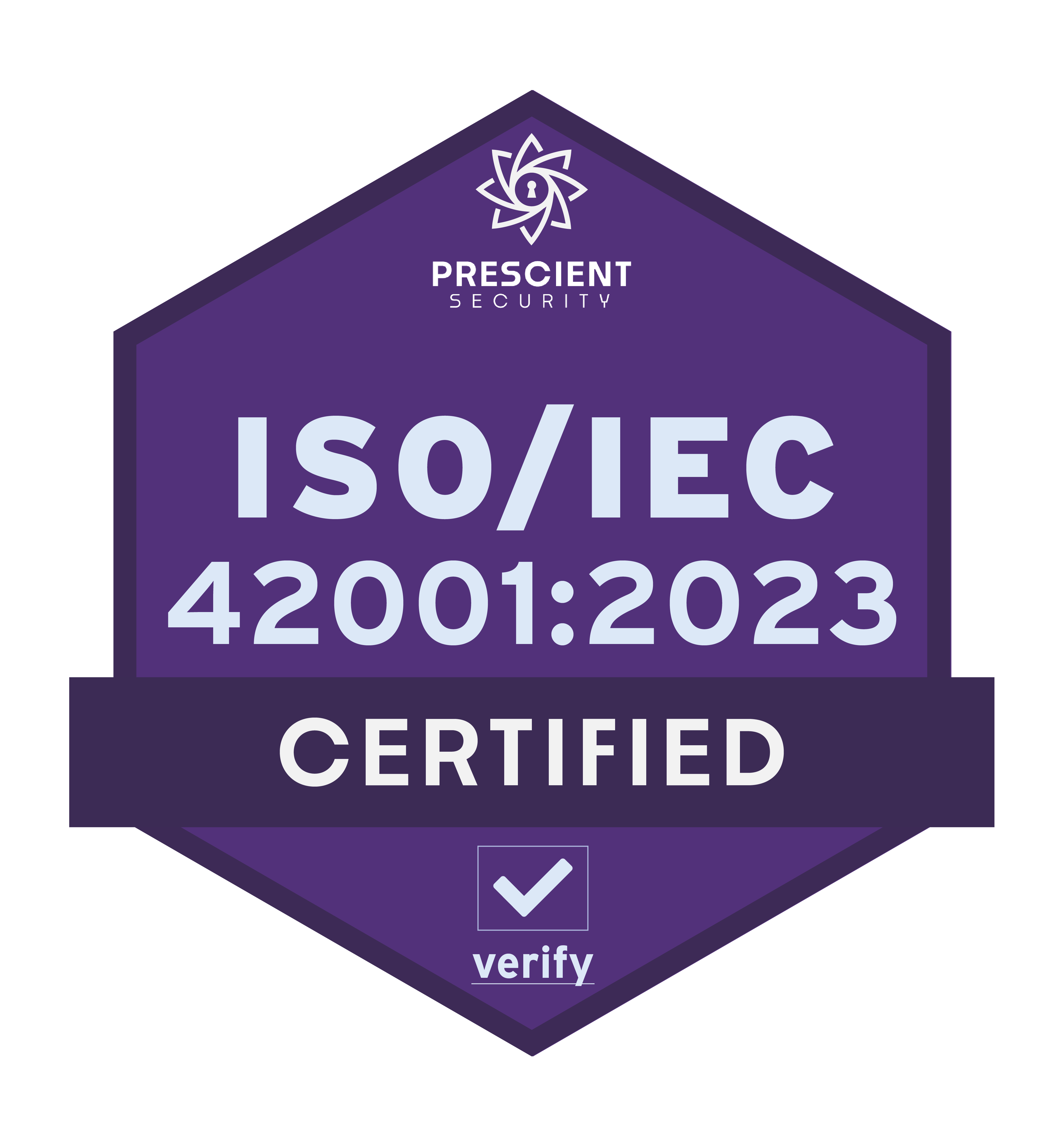Compliance
SOC 2 Type 2
Service Organization Controls (Soc2) (Type II) Trust Services Principles

ISO 27001
Information Security Management System (ISMS)

ISO 42001
Artificial Intelligence Management System (AIMS)

U.K. Cyber Essentials
U.K. Gov't backed Cybersecurity standard
GDPR
Protect the personal data and privacy of EU citizens for transactions that occur within EU member states
CCPA
California Consumer Privacy Act
HIPAA
Health Insurance Portability and Accountability Act (please see FAQ).
Resources
Get our latest security and compliance resources and reports
SOC 2 Type II
Cohere undergoes an annual SOC 2 Type II audit. Request here to see our report.
ISO 27001 Certification
Official Certificate
ISO 42001 Certification
Official Certificate
U.K. Cyber Essentials
Cohere's official issued certificate
Latest Penetration Test Report
API and web application penetration test results
Responsible Disclosure Policy
Rules of engagement for conducting and performing security research (i.e. vulnerability discovery) activities for participating in our Bug Bounty Program.
Cohere Enterprise Data Commitments
Overview of how Cohere handles and protects our Enterprise Customers' Data
Cohere Secure AI Frontier Model Framework
This document outlines Cohere's risk management methodology for managing risks to our models.
Usage Policy
This policy outlines the acceptable use cases for Cohere’s models and products by customers
Cohere Docs
Specific documentation on Cohere's Product and Services including guides and concepts, API technical documentation, release notes, and cookbooks.
Subprocessors
Google Cloud
Infrastructure service provider Location: USA

Fullstory
Software delivery platform Location: USA
LaunchDarkly
Feature Flagging Location: USA

New Relic
Platform Monitoring Location: USA

Retool
Software delivery platform Location: USA

Upollo
Fraud and Abuse Detection Location: USA, Australia

Hotjar
Customer support Location: USA
Sentry IO
Event and Error Handling Location: USA

Segment
Event and Error Handling Location: USA
